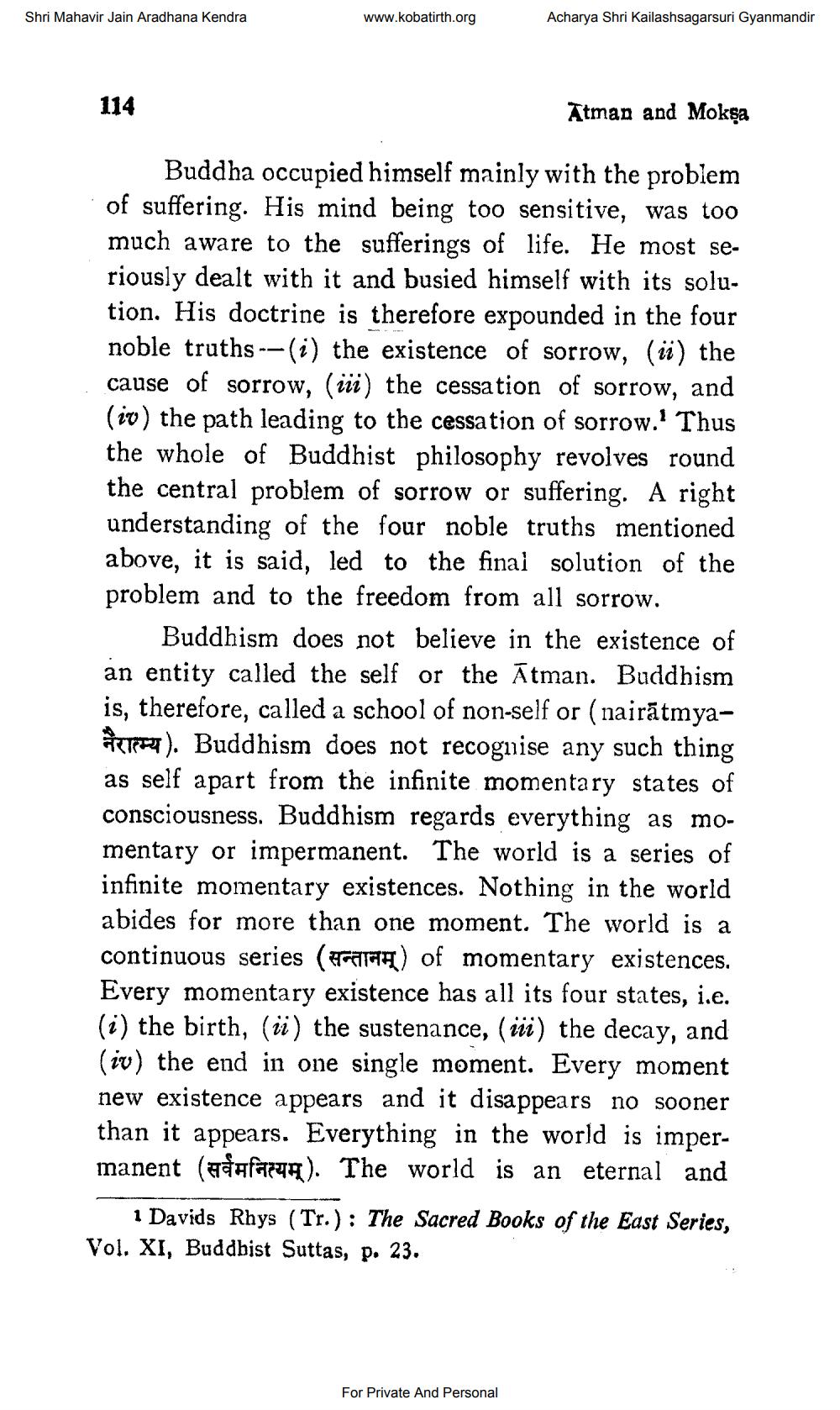________________
Shri Mahavir Jain Aradhana Kendra
www.kobatirth.org
Acharya Shri Kailashsagarsuri Gyanmandir
114
Atman and Moksa
Buddha occupied himself mainly with the problem of suffering. His mind being too sensitive, was too much aware to the sufferings of life. He most seriously dealt with it and busied himself with its solution. His doctrine is therefore expounded in the four noble truths--(i) the existence of sorrow, (ii) the cause of sorrow, (iii) the cessation of sorrow, and (iv) the path leading to the cessation of sorrow.' Thus the whole of Buddhist philosophy revolves round the central problem of sorrow or suffering. A right understanding of the four noble truths mentioned above, it is said, led to the final solution of the problem and to the freedom from all sorrow.
Buddhism does not believe in the existence of an entity called the self or the Ātman. Buddhism is, therefore, called a school of non-self or (nairātmyaRRET). Buddhism does not recognise any such thing as self apart from the infinite momentary states of consciousness. Buddhism regards everything as momentary or impermanent. The world is a series of infinite momentary existences. Nothing in the world abides for more than one moment. The world is a continuous series ( a) of momentary existences. Every momentary existence has all its four states, i.e. (i) the birth, (ii) the sustenance, (iii) the decay, and (iv) the end in one single moment. Every moment new existence appears and it disappears no sooner than it appears. Everything in the world is impermanent (HACIA). The world is an eternal and
1 Davids Rhys (Tr.): The Sacred Books of the East Series, Vol. XI, Buddbist Suttas, p. 23.
For Private And Personal




